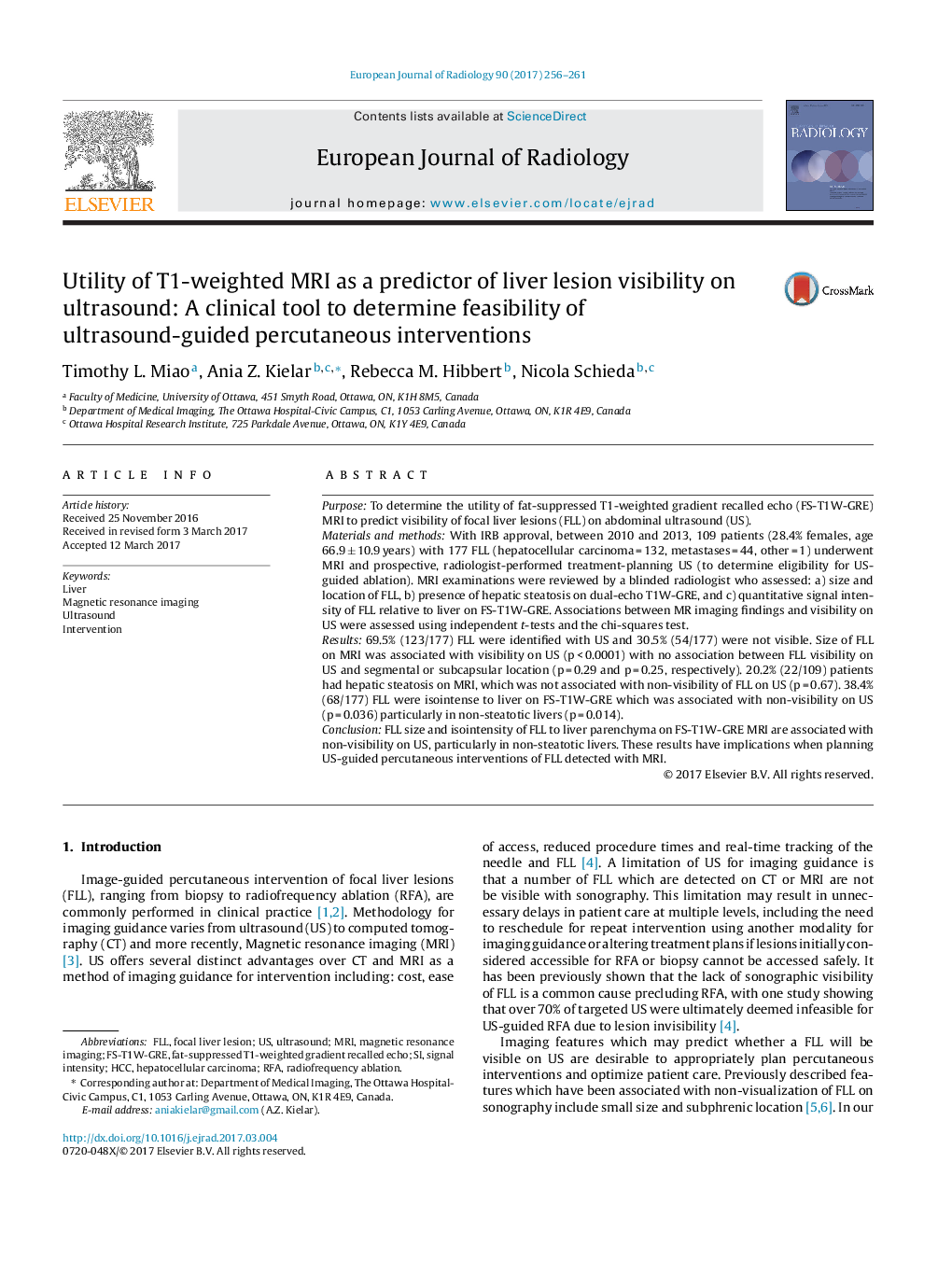| کد مقاله | کد نشریه | سال انتشار | مقاله انگلیسی | نسخه تمام متن |
|---|---|---|---|---|
| 5726328 | 1609730 | 2017 | 6 صفحه PDF | دانلود رایگان |

- FLL of smaller size and with T1W isointensity to surrounding liver parenchyma are associated with sonographic non-visibility.
- T1W isointensity more accurately predicts US non-visibility in non-steatotic livers.
- FLL size measurement and T1W isointensity can help plan US-guided interventions for FLL.
PurposeTo determine the utility of fat-suppressed T1-weighted gradient recalled echo (FS-T1W-GRE) MRI to predict visibility of focal liver lesions (FLL) on abdominal ultrasound (US).Materials and methodsWith IRB approval, between 2010 and 2013, 109 patients (28.4% females, age 66.9 ± 10.9 years) with 177 FLL (hepatocellular carcinoma = 132, metastases = 44, other = 1) underwent MRI and prospective, radiologist-performed treatment-planning US (to determine eligibility for US-guided ablation). MRI examinations were reviewed by a blinded radiologist who assessed: a) size and location of FLL, b) presence of hepatic steatosis on dual-echo T1W-GRE, and c) quantitative signal intensity of FLL relative to liver on FS-T1W-GRE. Associations between MR imaging findings and visibility on US were assessed using independent t-tests and the chi-squares test.Results69.5% (123/177) FLL were identified with US and 30.5% (54/177) were not visible. Size of FLL on MRI was associated with visibility on US (p < 0.0001) with no association between FLL visibility on US and segmental or subcapsular location (p = 0.29 and p = 0.25, respectively). 20.2% (22/109) patients had hepatic steatosis on MRI, which was not associated with non-visibility of FLL on US (p = 0.67). 38.4% (68/177) FLL were isointense to liver on FS-T1W-GRE which was associated with non-visibility on US (p = 0.036) particularly in non-steatotic livers (p = 0.014).ConclusionFLL size and isointensity of FLL to liver parenchyma on FS-T1W-GRE MRI are associated with non-visibility on US, particularly in non-steatotic livers. These results have implications when planning US-guided percutaneous interventions of FLL detected with MRI.
Journal: European Journal of Radiology - Volume 90, May 2017, Pages 256-261